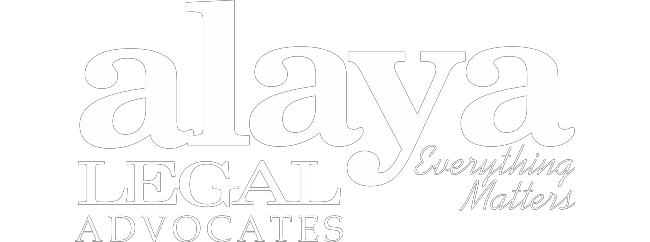PETROLEUM:
INFORMATION AND UPDATES
Alaya Legal is pleased to announce its second issue on Petroleum: Information and Updates. This issue covers all the legal and market developments around the globe from the world of Petroleum. In our earlier issue we had discussed about
various countries across the globe which have been grouped into categories depending on the quantum of proven ‘petroleum’ reserves present in such countries. This time the endeavour is to cover developments in ‘Medium concentration areas’ and
major developments in all other areas in India and around the globe.
Medium Concentration Areas are Libya, Nigeria, Kazakhstan, China, Brazil, Algeria, Mexico, United States.
GLOBAL SCENARIO
Statistics
Libya: Libya, a member of the Organization of Petroleum Exporting Countries (‘OPEC’), holds the largest proven oil reserves in Africa and is an important contributor to the global supply of light, sweet crude. Libya’s oil production has been impressively restored after months of conflict and insecurity. However, considerable uncertainty surrounds the future of the oil sector and the political regime that will govern it. According to Oil and Gas Journal, Libya had total proven oil reserves of 47.1 billion barrels as of January 2012 – the largest endowment in Africa, and among the ten largest globally. Close to 80 percent of Libya’s proven oil reserves are located in the eastern Sirte basin, which also accounts for most of the country’s oil output. Libyan oil is generally light (high API
gravity) and sweet (low sulfur content).
Venezuela: Venezuela has the second-largest natural gas reserves in the western hemisphere. According to the Oil and Gas Journal, Venezuela had 195 Tcf of proven natural gas reserves in 2012, the second largest in the western hemisphere behind the United States. In 2011, the country produced 1.1 Tcf of dry natural gas, while consuming nearly 1.2 Tcf.
Nigeria: Nigeria had an estimated 180 Tcf of proven natural gas reserves as of the end of 2011, according to the Oil and Gas Journal, making Nigeria the ninth largest natural gas reserve holder in the world and the largest in Africa. Despite holding a top 10 position for proven natural gas reserves, Nigeria produced about 1 Tcf of dry natural gas in 2011 and ranked as the
world’s 25th largest natural gas producer.
Algeria: Algeria produced 2.9 Tcf of dry natural gas in 2011. Production has steadily declined since 2005 as the country’s large and mature fields are depleting. According to Oil and Gas Journal, as of January 2013, Algeria had 159.1 Tcf of proven natural gas reserves, the ninth largest natural gas reserves in the world and the second largest in Africa after Nigeria. Algeria’s largest natural gas field, Hassi R’Mel, was discovered in 1956. Algeria also holds vast untapped shale gas resources. According to an U.S Energy Information Administration (‘EIA’)-sponsored study released in April 2011, Algeria has 231 Tcf of technically recoverable shale gas resources. The Ghadames Basin, located in eastern Algeria, southern Tunisia, and northwestern Libya, was identified as a major shale gas basin in the assessment.
Australia: According to Oil and Gas Journal, Australia had 110 Tcf of proven natural gas reserves as of January 2011, making Australia the twelfth largest holder of conventional natural gas reserves in the world. Australia also had 396 Tcf of technically recoverable shale gas reserves in 2009, according to an EIA study.
Nigeria: According to Oil and Gas Journal, Nigeria has an estimated 37.2 billion barrels of proven oil reserves as of the end of 2011. The majority of reserves are found along the country’s Niger River Delta and offshore in the Bight of Benin, the Gulf of Guinea, and the Bight of Bonny. Current exploration activities are mostly focused in the deep and ultra-deep offshore with some activities in the Chad basin, located in the northeast of the country.
The government hopes to increase proven oil reserves to 40 billion barrels in the next few years; however, exploration activity levels are at their lowest in a decade and only three exploratory wells were drilled in 2011, compared to over 20 in 2005. Rising security problems related to oil theft, pipeline sabotage, and piracy in the Gulf of Guinea, coupled with investment uncertainties surrounding the long-delayed PIB, have curtailed oil exploration projects and impeded the country from
reaching its ongoing target to increase production to 4 million bbl/d. Instead, crude oil production averaged 2.13 million bbl/d in 2011, roughly the same as it was a decade ago, and total liquids production averaged 2.53 million that same year, which is still below the peak production of 2.63 million bbl/d reached in 2005.
Kazakhstan: Kazakhstan’s proven oil reserves were estimated at 30 billion barrels by the Oil and Gas Journal in January 2012. The country’s main oil reserves are located in the western part of the country, where the 5 largest onshore oil fields (Tengiz, Karachaganak, Aktobe, Mangistau, and Uzen) are located. These onshore fields account for about half of current proven reserves, while the offshore Kashagan and Kurmangazy oil fields, in Kazakhstan’s sector of the Caspian Sea, are estimated to contain at least 14 billion barrels, with Kashagan accounting for around 9 billion barrels.
China: According to Oil and Gas Journal, China holds 20.4 billion barrels of proven oil reserves as of January 2012, up over 4 billion barrels from three years ago and the highest in the Asia-Pacific region. China’s largest and oldest oil fields are located in the northeast region of the country. China produced an estimated 4.3 million barrels
per day (bbl/d) of total oil liquids in 2011, of which 95 percent was crude oil. China’s oil production is forecast to rise by about 170 thousand bbl/d to nearly 4.5 million bbl/d by the end of 2013. Over the longer term, EIA predicts a flatter incline for China’s production, reaching 4.7 million bbl/d by 2035.
Brazil: According to the Oil and Gas Journal, Brazil has 14.0 billion barrels of proven oil reserves in 2012, the second-largest in South America after Venezuela. The offshore Campos and Santos Basins, located off the country’s southeast coast, hold the vast majority of Brazil’s proven reserves. In 2010, Brazil produced 2.7 million barrels per day (bbl/d) of liquids, of which 75 percent was crude oil. Average liquid production in Brazil contracted slightly in 2011, with modest gains in crude oil production offset by a decrease in ethanol production stemming from a poor sugar cane harvest.
Algeria: According to the Oil and Gas Journal, Algeria held an estimated 12.2 billion barrels of proven oil reserves, as of January 1, 2013, the third largest reserves in Africa (behind Libya and Nigeria). All of the country’s proven oil reserves are held onshore, because there has been limited offshore exploration. The majority of proven oil reserves are in the Hassi Messaoud province, which contains the country’s largest oil field, Hassi Messaoud, located in the eastern part of the country, near the Libyan border.
Mexico: Mexico is a major non-OPEC oil producer and among the largest sources of U.S. oil imports.
Mexico produced an average of 2.96 million barrels per day (bbl/d) of total oil liquids during 2011. Crude oil accounted for 2.55 million bbl/d, or 86 percent of total output, with the remainder
attributable to lease condensate, natural gas liquids, and refinery processing gain. Mexico’s oil production has been relatively stagnant since 2009, and the minor decreases that have occurred mark an improvement from the more drastic declines that commenced around the middle of the last decade. Mexico is a large but declining net crude exporter, and is a net importer of refined petroleum products. Its most important trading partner is the United States, which is the
destination for most of its crude oil exports and the source of most of its refined product imports.
According to the Oil and Gas Journal, Mexico had 10.2 billion barrels of proven oil reserves as of the end of 2011. Most reserves consist of heavy crude oil varieties, with the largest concentration of reserves occurring offshore in the southern part of the country, especially in the Campeche Basin. There are also sizable reserves in Mexico’s onshore basins in the northern parts of the country.
Market Update
Griffiths Energy eyes southern Chad oil production start:
February 02, 2013
According to Oil and Gas Journal, Griffiths Energy International Inc., Calgary could start pipeline shipments of oil from Badila and Mangara discoveries, wells in southern Chad by July 2013. Griffiths Energy has entered into an agreement for physical access to the 250,000 b/d oil pipeline from southern Chad to Kribi, Cameroon. The company got access to 111 km of pipeline as a right-of-way to connect Badila and Mangara fields to the export pipeline.
China’s Largest Oil Producer Acquires 20% Stake in Mozambique Asset:
March 15, 2013
As reported by Economic Times, India, China National Petroleum Corporation has acquired a planned 20% stake in ENI’s Mozambique asset for $4.2 billion , before placing bids for Videocon’s 10% stake in Mozambique’s offshore block.
Non-OECD countries accounted for more than half of global liquid fuels use in April:
In April 2013, for the first time ever, estimated total liquid fuels consumption by the industrialized economies that are members of the Organization for Economic Cooperation and Development (OECD), at 44.3 million barrels per day (bbl/d), was below that of non-member countries that used 44.5 million bbl/d.
Azerbaijan: Gum Deniz 3D sesmic survey authorized:
March, 13 2013
According to Oil and Gas Journal, Greenfields Petroleum Corporation, Houston, and other partners in Bahar Energy Ltd. have approved a 3D seismic survey for Gum Deniz oil field in Azerbaijan based on 2D seismic results and the start of the development drilling program. It will be the first 3D seismic to be shot in the field. Acquisition is to start in mid-2013 after approvals have been obtained.
Studies predict oil upswing in deep-water Gulf of Mexico 2013, beyond:
May 05, 2013
The horrific Deep-water Horizon explosion in the Gulf of Mexico brought a halt to most new drilling in the Gulf as the US government imposed a six-month moratorium on drilling activity while trying to sort out the problem and determine how to prevent another such event. Even after the moratorium was lifted, permit delays and the global economic malaise kept drilling down significantly during 2010 and 2011. Now, three years later, the rig count is finally back to normal and oil and gas production in the Gulf of Mexico is humming. As reported in Oil and Gas Journal there is a strong upswing in oil exploration and production in deep-water Gulf of Mexico fields according to EIA.
REPUBLIC OF INDIA
April 25, 2013
Jindal Petroleum, a group firm of Jindal Steel and Power, has discovered crude oil in one of its blocks in Georgia and is planning to invest USD 100 million on development of its blocks in the East European country.Jindal Petroleum currently holds five oil blocks in the Georgia, including a producing oil block and has already invested USD 100 million on development of the blocks.
May 29, 2013
State-run Hindustan Petroleum has approached global energy giants such as Total SA of France and British major BP to revive the stalled Rs 50,000 crore refinery-cum-petrochemical projects at Vizag in Andhra Pradesh.
India Won’t Cap Iran Oil Imports:
April 11, 2013
India is unwilling to impose curbs or cap oil imports from Iran, and will continue its energy ties with Tehran as long as it gets a “good deal” and logistic support. The reiteration comes even as oil imports from Iran have slowed following US pressure.
India May Propose Preferential Trade Deal With Iran:
April 23, 2013
As reported in Economic Times, India, India is likely to propose a preferential tariff arrangement to Iran to boost the bilateral trade between the two countries, hoping higher exports will help it pay for crude oil imported through the rupee payment mechanism set up last year. The US led sanctions on Iran have made it difficult for India to make payment for crude oil India purchases from Iran resulting in a drop in share of Iranian crude to about 7% from 11% in 2011-12. The import duty on Indian imports into Iran makes purchases from India less favorable among Iranian importers, therefore Indian wants Iran to sweeten the deal for purchases from India. This will allow India to import more crude from Iran. Under the rupee arrangement, India makes part payment for crude it buys from Iran into a rupee account maintained with UCO Bank. Iran uses this account to import goods from India, reducing the need for routing dollar payments through third country.
ONGC to Spend 4051 crore in Western Fields:
March 21, 2013
State-run Oil & Natural Gas Corporation (‘ONGC’) will invest 4,051 crore to rebuild old offshore facilities in the Arabian Sea. The PSU also announced three “significant” oil and gas discoveries; two in the prolific Krishna-Godavari basin and one in Tripura. ONGC will invest 2,913 crore to refurbish platforms in the Mumbai High, Neelam and Heera oil and gas fields. About 1,138 crore will be spent on reconstruction of process complexes in prolific Bassein & Satellite fields. The existing infrastructural facilities would be required to be in service beyond 2030 for western offshore fields, which is much more than the design life of these facilities. Hence revamping/ retrofitting of these facilities in a phased manner are essential to maintain the production of oil and gas from Mumbai High and Heera fields. The project will be completed by pre-monsoon 2016.
HPCL Plans 37,320 crore oil refinery and petrochemical complex in Rajasthan:
March 7, 2013
State-owned Hindustan Petroleum signed an initial agreement to set up a 37,320- crore oil refinery and petrochemical complex in Barmer desert. The nine million tonnes per annum facility, the first refinery in Rajasthan, is planned to go on stream in four years. A memorandum of understanding for setting up the refinery was signed between HPCL and Rajasthan government. The refinery, which will fulfill nearly a decade-old demand of the state, will run on crude oil from neighbouring oilfields of Cairn India. Half of the crude oil requirement at the proposed refinery comes from the Barmer oilfields of Cairn and the rest will be imported. While HPCL will own majority stake in the refinery, state government will take 15-26% stake.
New Gas Findings
Lundin group discovers oil on Utsira high western flank:
April 08, 2013
A group led by Lundin Petroleum AB has made an oil discovery on the western flank of the Utsira high 15 km south of Edvard Grieg field in the Central North Sea offshore Norway. Lundin Petroleum as operator plans to production-test the 16/4-6S exploratory well in 101 m of water on the Luno II prospect in PL359. The well drilled through a section of close to 200 m of sand with a high net-to-gross content and proved a gross oil column in excess of 40 m. The well encountered an oil-water contact at 1,950 m below mean sea level. The oil is light and of good quality.
Ecopetrol tests Meta Province heavy oil discovery:
April 02, 2013
Colombia’s state Ecopetrol SA disclosed that its Venus-2 exploratory well in San Martin municipality of Meta Province had proved the presence of crude oil. The well, on the CPO-11 block 90 miles south-southeast of Bogota, produced 630 b/d of 17° gravity oil with 39% water cut on an electric submersible pump. Ecopetrol, which holds a 100% interest in the block, plans to continue its exploratory efforts there in coming weeks. The company acquired the block in December 2008.
Legal Developments
Libya’s new petroleum law
In March 2013, the Libyan Oil and Gas Minister was reported to have announced that a committee of experts had been set up to prepare a comprehensive draft for a new petroleum law. According to the Minister,
the new law will also determine the role of the national oil companies and incorporate that in a unified law that complies with principles of international law applying to the oil and gas sector.
Supreme Court stays proceedings against diesel decontrol:
May 14, 2013
Supreme Court has stayed all proceedings against moves to decontrol diesel, clearing a big hurdle in the implementation of the liberal fuel policy which the government said was driven by concerns of fiscal prudence, energy security and freeing up funds for welfare schemes. The government was facing legal challenges against its move to gradually align diesel prices to international levels and grant state oil firms the
freedom to charge full market rates to bulk buyers such as railways, defence and state transport corporations. Bulk purchasers had challenged the policy in various High Courts. They were allowed to sell diesel to all consumers taking
bulk supplies directly from installations of Oil Marketing Companies at non-subsidised market determined price with immediate effect. Oil Marketing Companies would not be eligible to any subsidy on such direct sale of diesel to bulk consumers.
Sources
Norwegian Petroleum Directorate
U.S Energy Information Administration
The International Energy Agency
Economic Times (India)
Natural Gas Asia and Europe
OPEC
Oil and Gas Journal
|
||||||||||||||||||||||
Disclaimer
The information in this private circulation is not legal advice and should not be treated as such. The information is taken from public domain and is purely for private and non- commercial purposes. We do not represent that the information is correct, accurate, complete or non- misleading.
This disclaimer will be governed by and construed in accordance with laws of India, and any disputes relating to this disclaimer will be subject to the exclusive jurisdiction of the courts of the Republic of India.
If you do not accept the terms of this Disclaimer or do not wish to receive this circulation, please reply to this email with ‘Do Not Send’.

























